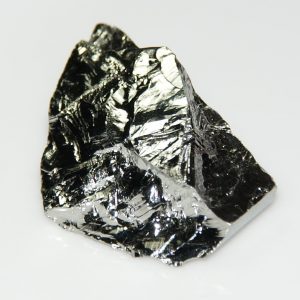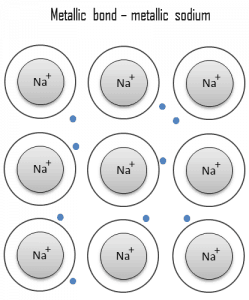Article Summary & FAQs
What is a material?
A material is defined as a substance (most often a solid, but other condensed phases can be included) that is intended to be used for certain applications. There is a myriad of materials around us – they can be found in anything from buildings to spacecraft.
Key Facts
- Based on chemistry and atomic structure, materials are classified into three general categories:
- Metals (metallic elements),
- Ceramics (compounds between metallic and non-metallic elements),
- Polymers (compounds composed of carbon, hydrogen, and other non-metallic elements).
- Real materials are never perfect. Classifying crystallographic defects (microscopic defects) is frequently made according to the geometry or dimensionality of the defect.
- Key mechanical design properties are:
- Stiffness. Stiffness is the ability of an object to resist deformation in response to an applied force.
- Strength. Strength is the ability of a material to resist deformation.
- Hardness. Hardness is the ability to withstand surface indentation and scratching.
- Ductility. Ductility is the ability of a material to deform under tensile load (% elongation).
- Toughness. Toughness is the ability of a material to absorb energy (or withstand shock) and plastically deform without fracturing.
- Metal is a material (usually solid) comprising one or more metallic elements (e.g., iron, aluminium, copper, chromium, titanium, gold, nickel).
- Steels are iron-carbon alloys that may contain appreciable concentrations of other alloying elements. Adding a small amount of non-metallic carbon to iron trades its great ductility for greater strength.
- An alloy is a mixture of two or more materials, at least one of which is a metal. Alloys can have a microstructure consisting of solid solutions, where secondary atoms are introduced as substitutionals or interstitials in a crystal lattice.
- Non-destructive testing, NDT, is a very broad group of structural or material inspections, and as the name implies, these inspections do not destroy the material/structure being examined.

A material is defined as a substance (most often a solid, but other condensed phases can be included) that is intended to be used for certain applications. There is a myriad of materials around us – they can be found in anything from buildings to spacecraft. Based on chemistry and atomic structure, materials are classified into three general categories:
- Metals (metallic elements),
- Ceramics (compounds between metallic and non-metallic elements),
- Polymers (compounds composed of carbon, hydrogen, and other non-metallic elements).
In addition, composites are composed of at least two different material types. New and advanced materials being developed include nanomaterials, biomaterials, and energy materials, to name a few.
Materials for Nuclear Engineering
Understanding material science is essential for power plant personnel to understand why the material was selected for certain applications within their facility. Almost all processes that take place in nuclear facilities involve the use of specialized metals. To safely operate and maintain the facility and facility support systems, a basic understanding of material science is necessary for nuclear facility operators, maintenance personnel, and the technical staff. Our goal here will be to introduce the material engineering of nuclear reactors. The knowledge of thermophysical and nuclear properties of materials is essential for designing nuclear power plants.
Classification of Materials
A material is defined as a substance (most often a solid, but other condensed phases can be included) that is intended to be used for certain applications. There is a myriad of materials around us – they can be found in anything from buildings to spacecraft. Based on chemistry and atomic structure, materials are classified into three general categories:
-

Metallic bond Metals. Metal is a material (usually solid) comprising one or more metallic elements (e.g., iron, aluminum, copper, chromium, titanium, gold, nickel), and often also non-metallic elements (e.g., carbon, nitrogen, oxygen) in relatively small amounts. The unique feature of metals, as far as their structure is concerned, is the presence of charge carriers, specifically electrons. This feature is given by the nature of the metallic bond. In a metallic bond, the atoms do not share or exchange electrons to bond together. Instead, many electrons (roughly one for each atom) are more or less free to move throughout the metal so that each electron can interact with many fixed atoms. The electrical and thermal conductivities of metals originate from their outer electrons being delocalized.
- Ceramics. A ceramic is a solid material comprising an inorganic compound of metal, non-metal, or metalloid atoms primarily held in ionic and covalent bonds. Common examples are earthenware, porcelain, and brick. In the nuclear industry, uranium dioxide is a ceramic refractory uranium compound, in many cases, used as a nuclear fuel.
- Polymers. Polymers are compounds (macromolecules) composed of carbon, hydrogen, and other non-metallic elements. Polymers range from familiar synthetic plastics such as polystyrene to natural biopolymers such as DNA and proteins that are fundamental to biological structure and function. Some common and familiar polymers are polyethylene (PE), nylon, polycarbonate (PC), polystyrene (PS), and silicone rubber.
In addition, composites are composed of at least two different material types. Another materials category is the advanced materials that are used in high-tech applications, including:
- Semiconductors. In general, semiconductors are inorganic or organic materials that can control their conduction depending on chemical structure, temperature, illumination, and the presence of dopants. The name semiconductor comes from the fact that these materials have electrical conductivity between a metal, like copper, gold, etc., and an insulator, like glass.
- Biomaterials. In general, a biomaterial is any substance engineered to interact with biological systems for a medical purpose. These materials must not produce toxic substances and must be compatible with body tissues (i.e., must not cause adverse biological reactions).
- Smart materials. Smart materials sense and respond to changes in their environments in predetermined manners.
- Nanomaterials are materials with structural features on the order of a nanometer, some of which may be designed on the atomic/molecular level.